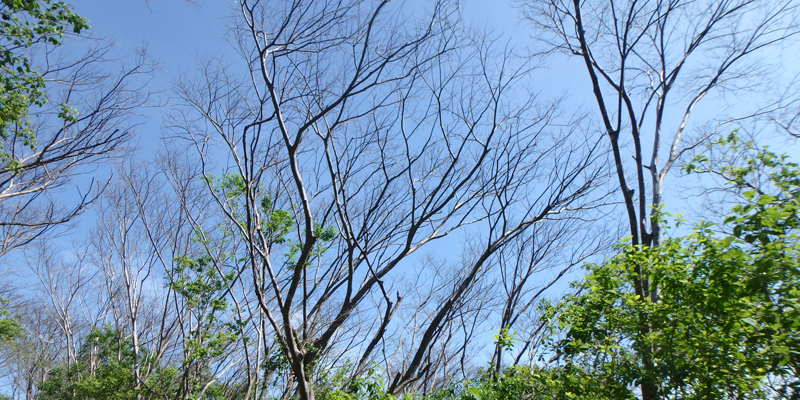
Photo credit: Dr. Jennifer S. Powers
Imagine that you are walking in a tropical forest in Costa Rica where most trees look like the ones in Minnesota during the winter -- leafless. You might be wondering how this can be possible. What can be causing these trees to lose their leaves?
The answer is water. Water in these systems control when trees have leaves or when they lose them. This change in tree foliage is completely normal in tropical dry forests where trees lose their leaves in late October or early November when the rains stop.
Even though these forests do not get much water compared to other places in the tropics, too little water is problematic. It can cause tree mortality. Changes in the amount of rainfall and the pattern and length of the rainy season are causing trees to shed leaves. Tropical trees with not enough water lose their leaves just like they do when the seasons change in Minnesota.
It turns out when trees in the tropics lose their leaves, they die more frequently. Nevertheless, not all the trees are dying at the same pace, some of them can actually survive without much water.
Picture not watering your plants for more than 300 days. That is what happened to the plants of a dry forest in Costa Rica in 2015.
To figure out what trees were more vulnerable to mortality, Dr. Jennifer Powers and her team looked at about 50 different types of trees to see how they responded to the 2015 severe drought event. They measured several tree characteristics, like the amount of water a leaf can hold when dehydrated or the area that tree leaves cover.
The team published their findings in Global Change Biology. They found that measuring tree characteristics related to water can tell us the chances of a tree surviving. Trees that need less water are the ones with higher chances of making it through.
Measuring tree characteristics related to tree water usage can tell us what trees in a forest can withstand longer periods of drought and have higher chances to survive in the future when climate conditions worsen as anticipated.
Powers, J.S., Vargas G, G., Brodribb, T.J., Schwartz, N.B., Pérez‐Aviles, D., Smith‐Martin, C.M., Becknell, J.M., Aureli, F., Blanco, R., Calderón‐Morales, E., Calvo‐Alvarado, J.C., et al. 2020. A catastrophic tropical drought kills hydraulically vulnerable tree species. Global Change Biology, 26(5), pp.3122-3133.